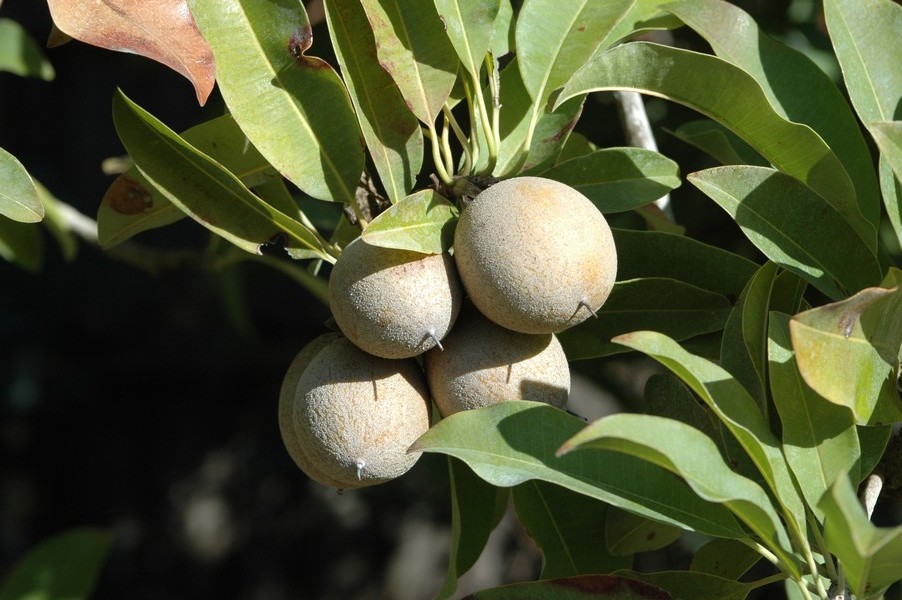
Common Name: Sapodilla | Scientific Name: Manilkara zapota

Family Name: Ebenaceae
Introduction
When it comes to this next fruit, its important to take a look at the picture! The word sapodilla refers to different fruits in different parts of Mexico, Central America, and South America. This has to do with the fact that in the native American languages of those regions, Tzpotl, or Sapote, is a generic word for fruit. The word sapodilla, is a mixture of a Native American (Sapote) and Spanish word(illa or small). So, the term sapodilla means a small sapote, and there are a lot of small fruits from that part of the word. So, in this entry we are talking about Manilkara zapota, and it is one delicious fruit.
Its interesting to note that this tree produces more than just a good fruit. When you cut into the tree, a white latex comes spilling out. This white latex was called Chikle by the Central Americans, and, was orignally used to created a fun chewy substance…….something we now call chewing gum. The original chewing gum, and some of the better chewing gums, are still made with the sap of this tree. The word chicklet, indeed, comes from the Native American word for this tree. Im not a chewing gum person so I have no plans to make home made chewing gum, but, having a big sapodilla tree, I could!
Being a new tropical gardener, one of the really surprising things about gardening in Florida is that its a lot harder than I imagined. I thought, oh, tropical weather, things will just grow like weeds, all that sun and rain. Well, as it turns out, this is not the case. Along with all the rain comes a lot of fungus, which kills a lot of plants, and a host of vicious garden bugs that eat just about everything. To make matters more complicated, south Florida is too hot for some plants, and not hot enough for others. Its semi-tropical and finding plants that will thrive in the weather down here is a lot more challenging
But, all that said, the house I bought in south Florida came with a huge sapodilla tree that thrives no matter what. Bugs dont eat it, fungus doesnt attack it, and it doesnt mind the variable weather. It deals with this enviroment and produces two huge crops of fruit each year. This tree gets the Dr. Schar merit award for getting the job done.
Now, the fruit is really interesting. If I had to describe it, I would say it tastes like canned pears that had been dusted with brown sugar. But, that would just be a close approximation. It really has its own wonderful and unique taste. And, like I said, twice a year, the tree is covered from top to bottom with fruit.
Delicious as the fruit is, and as indestructable as the tree appears, this is one of those fruits that has never made it to the grocery store. Im not sure why, its delicious enough to make the grade, but, it hasnt. If you want to sample it, your best bet is to visit a Latin Grocery in south Florida, and look in the fruit department. The one closest to me, in Lake Worth, carries them from time to time.
I think this needs to change. We need to grow things that do their job without the aid of fertilizer, coddling, and pesticides. And this is one of those fruit trees. No spray required. Its good for the mouth and good for the earth.
Disclaimer: The author makes no guarantees as to the the curative effect of any herb or tonic on this website, and no visitor should attempt to use any of the information herein provided as treatment for any illness, weakness, or disease without first consulting a physician or health care provider. Pregnant women should always consult first with a health care professional before taking any treatment.
